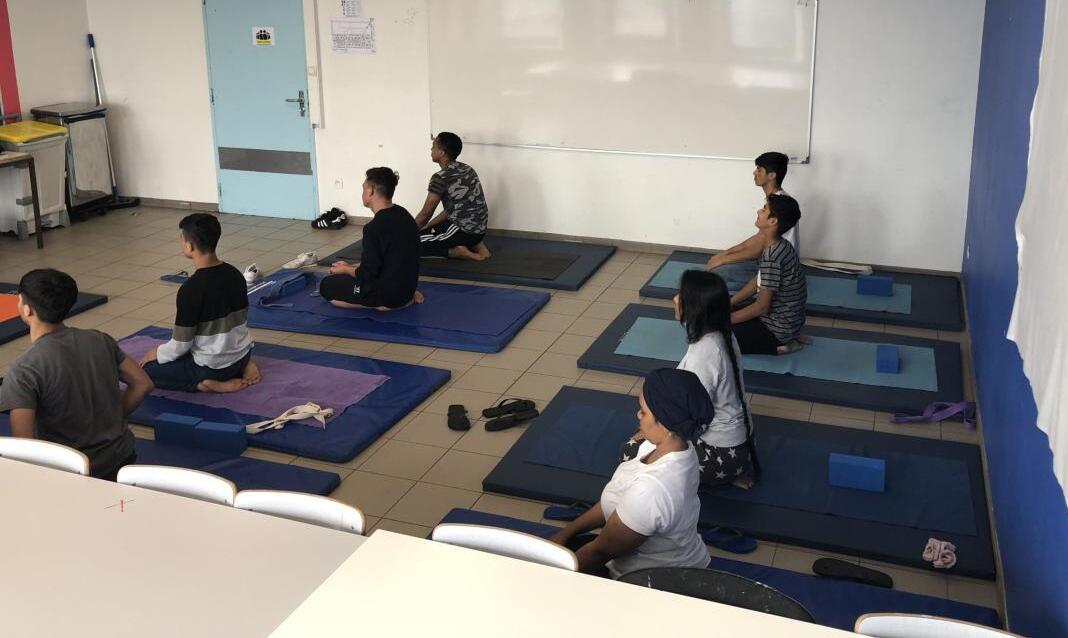In world literature, the idea that we are our own worst enemy is prevalent. Two examples come to mind: In the Indian epic Mahabharata, Krishna reminds one warrior that his worst enemy is still alive, and he is alive inside him. Nietsche says in Thus Spoke Zarathustra: “But the worst enemy you can meet will always be yourself. You lie in wait for yourself in caverns and forests”.
It doesn’t have to be this way. Djibril taught me that we can also be our own best friend. He is a boy with a certain reserve and his approach is amicable but measured. He has been in this temporary refugee centre for many months and has participated in my yoga for young refugees since he first arrived.
I have taught yoga at the centre weekly for more than four years and have met hundreds of youngsters from Afghanistan, Africa and the Middle East. This centre is dedicated to minors, who have travelled to EU on their own, without parents or adult relatives. Djibril is maybe 17 years old, but very mature. He always places himself on a mat in front and is a natural helper for distributing the props that I have brought.
I have only recently introduced meditation into my classes with the minors. I have hesitated, because I find this ultimate goal of yoga very challenging in my own practice and therefore would not be very credible at teaching it. I have wrongly thought that it must be impossible for the youngsters.
I should have known better, because it turns out they are much more receptive to meditation than myself. Once it just happened, after an active practice and I found the whole group sitting quietly, eyes shut, and with very little verbal guidance from my part. Now I prepare the seated meditation more consciously, with some chest opening exercises, (lying with a brick between the shoulder-blades among others).
Djibril would slide into a seated position, sometimes not even symmetric, with the legs crisscrossed in an unusual way, retaining a straight back, shutting his eyes and turning his gaze inwards towards his own secret treasure.
Other students, especially first-timers, may giggle at the friends sitting still, a feeling I remember distinctly, but mostly there is a sense of serene quiet. I don’t want to push my luck and many are looking forward to the final rest with eyepillow, so I ask them to shift into a supine position after 5-10 minutes of seated meditation. Djibril, however, would peacefully remain in his position as the rest shuffled around and I quietly tuck them in.
After our last encounter, Djibril remained in the room with me and said that he was now leaving the centre, transferring to another one, which is the normal procedure, waiting for his asylum documents to be evaluated. I asked him if he knew anyone at the new centre and he said no. Then it struck me, that he will never be lonely. Thanks to his capacity for quiet meditation, he is his own best friend. I told him so, and he quietly agreed. It was a comforting thought for both of us.
Namaste,
Emily

Good post. I learn something totally new and challenging on blogs I stumbleupon on a daily basis. Its always useful to read content from other authors and practice something from their websites.
Excellent blog post. I certainly love this website. Keep it up!
Greetings! Very useful advice within this article! Its the little changes that make the most significant changes. Thanks a lot for sharing!